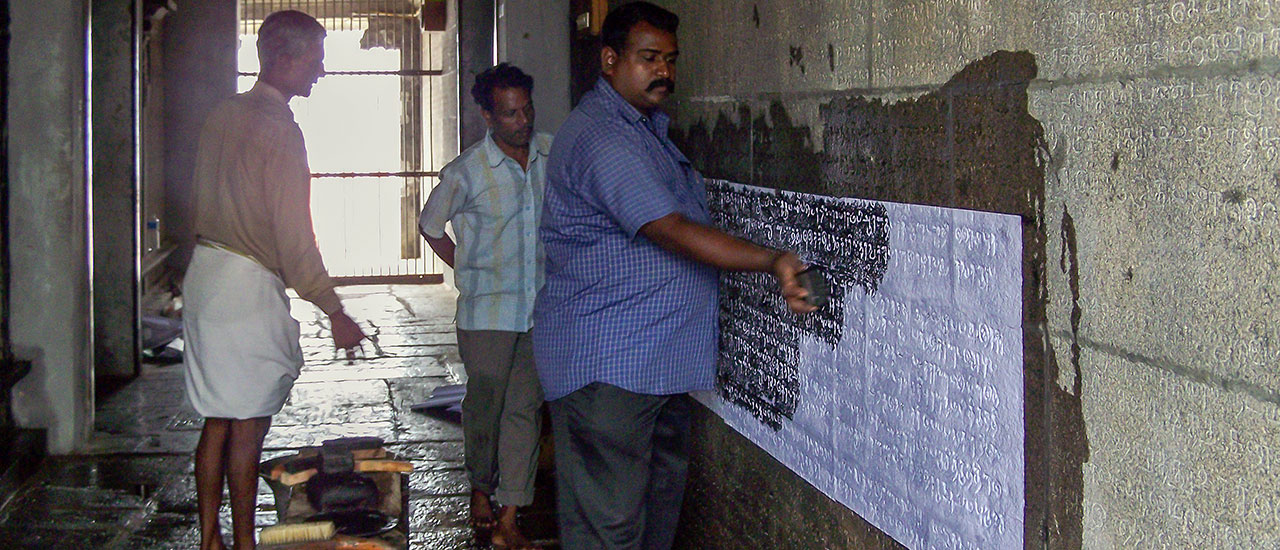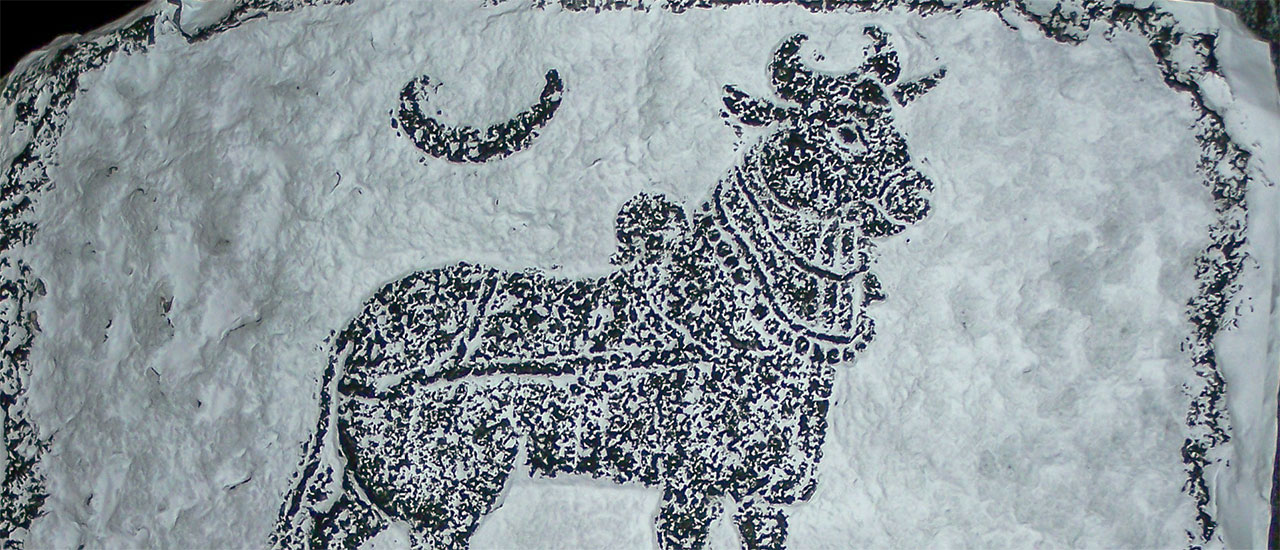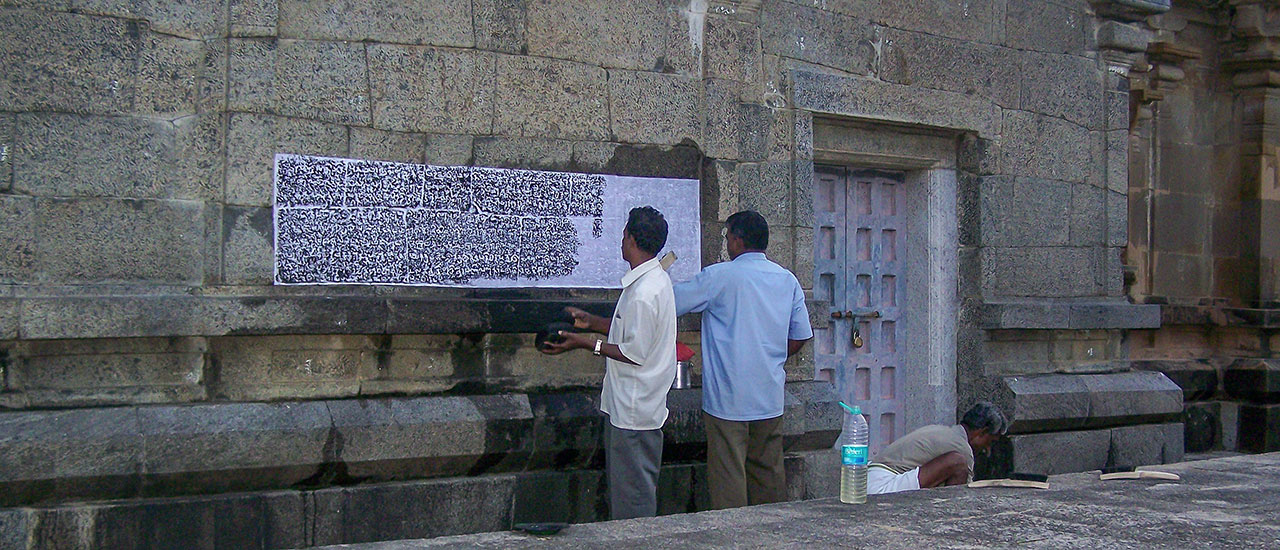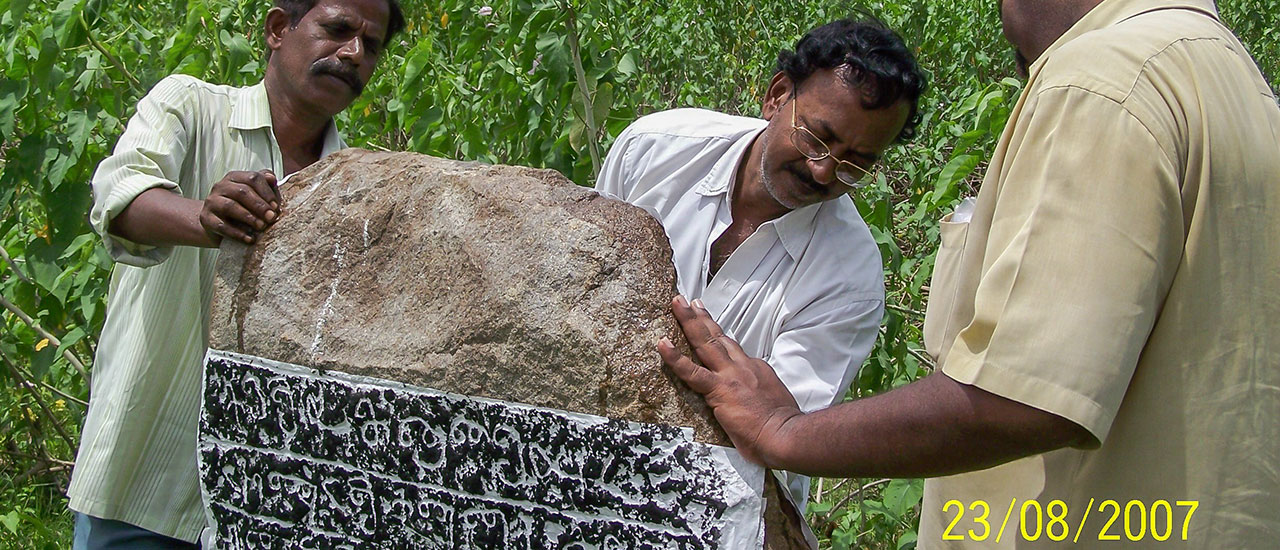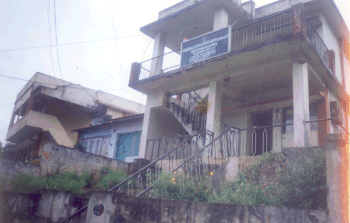Epigraphy
Epigraphy is the study of Inscriptions on Rocks, Pillars, Temple walls, Copper plates and other Writing-materials like Stones, Metals, Potteries, Woods, Palm leaves, Clothes, Conch shells, Mural paintings and Coins. It is one of the most fascinating and instructive studies. It deals with the art of writing, which distinguishes man from animals and provides us with an instrument for conservation and transmission of historical traditions from generation to generation.
Inscriptions are the main source for reconstructing the history and culture of ancient civilizations. It serves as primary documentary evidence to establish legal, socio-cultural, literary, archaeological, and historical antiquity on the basis of engravings.
Recent Survey on Indian Epigraphy which took place during 1996, places of inscriptions of Tamil Nadu at the top of the list. The categories of language, alphabet and number of inscriptions on both stones and copper plates also indicate Tamil Nadu as the first among Indian States. From this survey it can easily be understood that Tamil Nadu has the bulk of inscriptions found in India.
It has been estimated with a fair degree of accuracy that the inscriptions written in Tamil occupy the first position in volume, amounting nearly 20,000, followed by those in Kannada (10,600), Sanskrit (7,500) and Telugu (4,500). Inscriptions in Tamil language are noticed from the third century BCE onwards. (Source: Journal of the Epigraphical Society of India Volume 19 : 1993)
A separate epigraphy wing was started during the year 1966. The primary function of this wing is to copy inscriptions on boulders, stone pillars, stones, temple walls and on copper plates. The inscriptions are deciphered,edited and published. So far, about 24,771 inscriptions are copied and their estampages (ink impression) are preserved in this wing. Some original copper plates and old palm leaf manuscripts are also under the custody of this department.
An Institute of Epigraphy has been functioning since 1973-74. It conducts one year P.G.Diploma course in Epigraphy and Archaeology. The number of seats is 8 per year. The students are paid a monthly stipend of Rs.4,000. The educational qualification for admission to this course is M.A. in Tamil or History or Sanskrit or Ancient History & Archaeology of University of Madras or its equivalent. It has 2 papers in Theory and 2 Practical papers for examination.
The Department of Archaeology has been recognized as a Centre for doing research in history and archaeology leading to Ph.D by the University of Madras during the year 2003.
The estampages of the Inscriptions and Palm leaf manuscripts are well preserved at Ooty Epigraphy wing.

